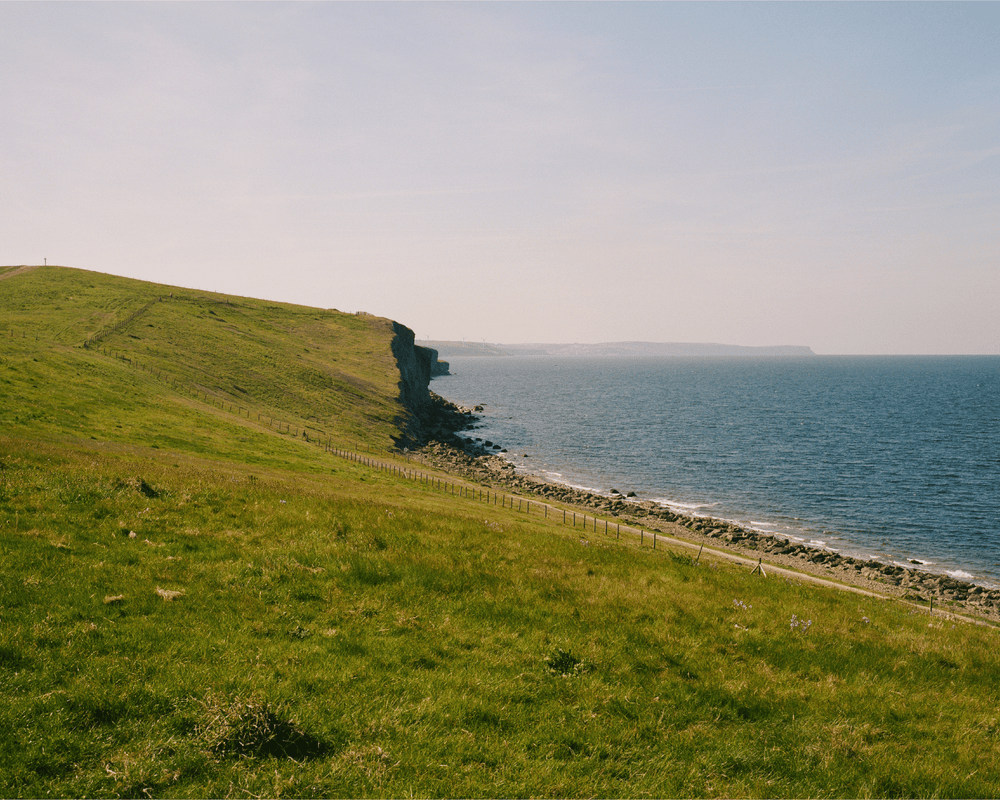Northern Sole: A Visit to the New Balance Factory
By Liam Jefferies
May 28, 2025

There’s a salt tang in the air when you step off the train at Flimby. Even in summer, the Cumbrian coast can feel remote, like a place that’s trying not to be found. It’s just a short trip down the road to our destination, past green fields trimmed by dry stone walls and the occasional sheep who looks up at your arrival with mild suspicion. You’re not quite in the Lake District, but the romance of it still clings to the edges of things.
We’re here to see trainers.


More precisely, we came to see where trainers are made, the hard way, by hand, with care, in Britain. Flimby is home to the New Balance factory, one of the few remaining outposts of large scale footwear production in the UK. For those who still believe in the romance of making, this low-slung complex near the Solway Firth is something close to a shrine.

Inside, it’s not flashy. There are no autonomous consoles or conveyor belts humming with algorithmic efficiency. Instead, there are people. Dozens of them, some with decades at the bench, focused on stitching, lasting, trimming. You see calloused fingers guiding suede around a toe box, deft hands applying solvent with the casual precision of muscle memory. A thousand small actions, each one essential. There's a rhythm to it, not mechanical, but human.
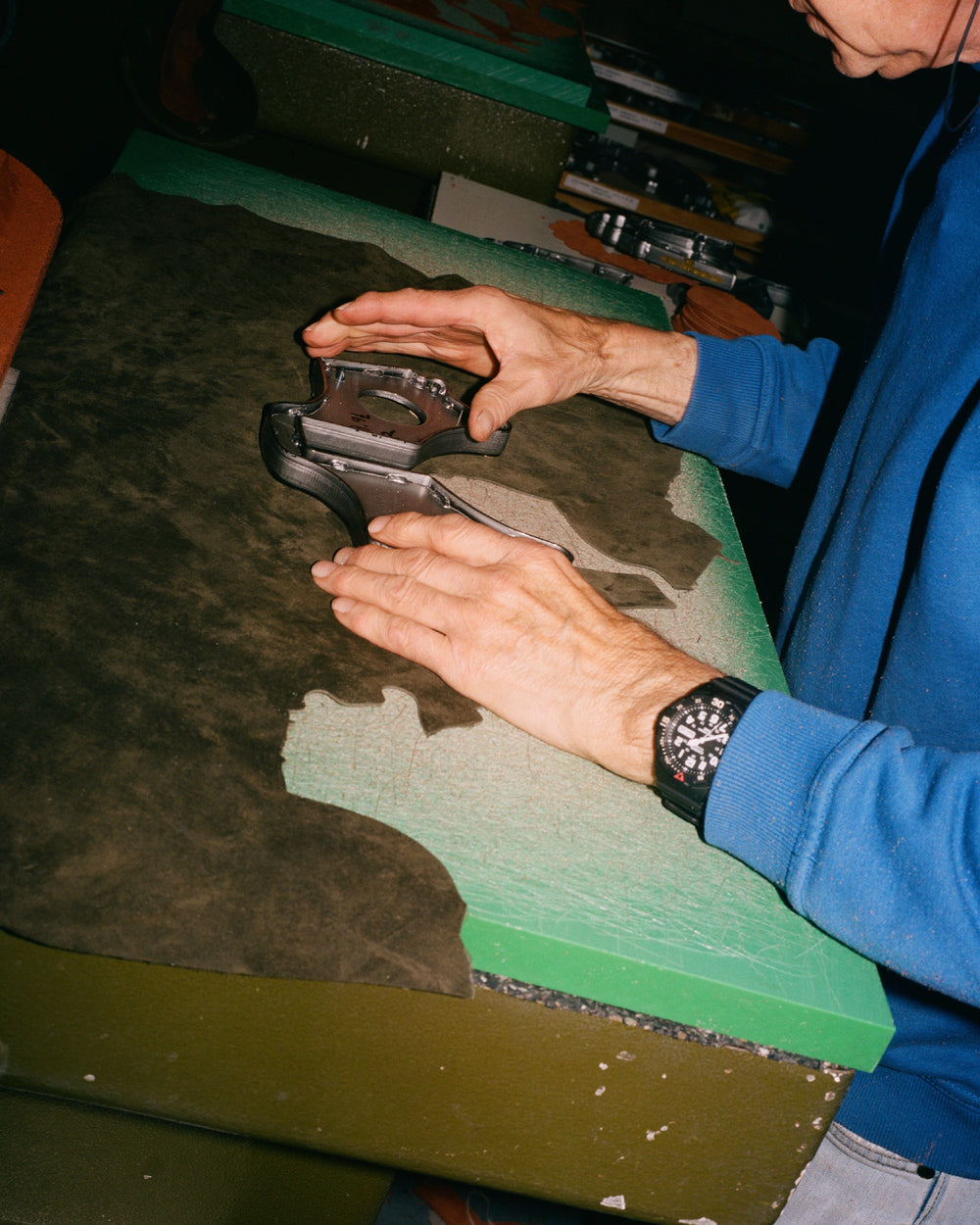
The soundtrack to industry here isn’t just the clatter of machinery or the whir of a roughing brush. It’s Al Green. It’s The Foundations. It’s Northern Soul. And it’s pouring out of radios tucked into every nook of the factory floor, an industrial hymn to handcraft and heritage. Because if you’re making something properly, you might as well do it to a tune.
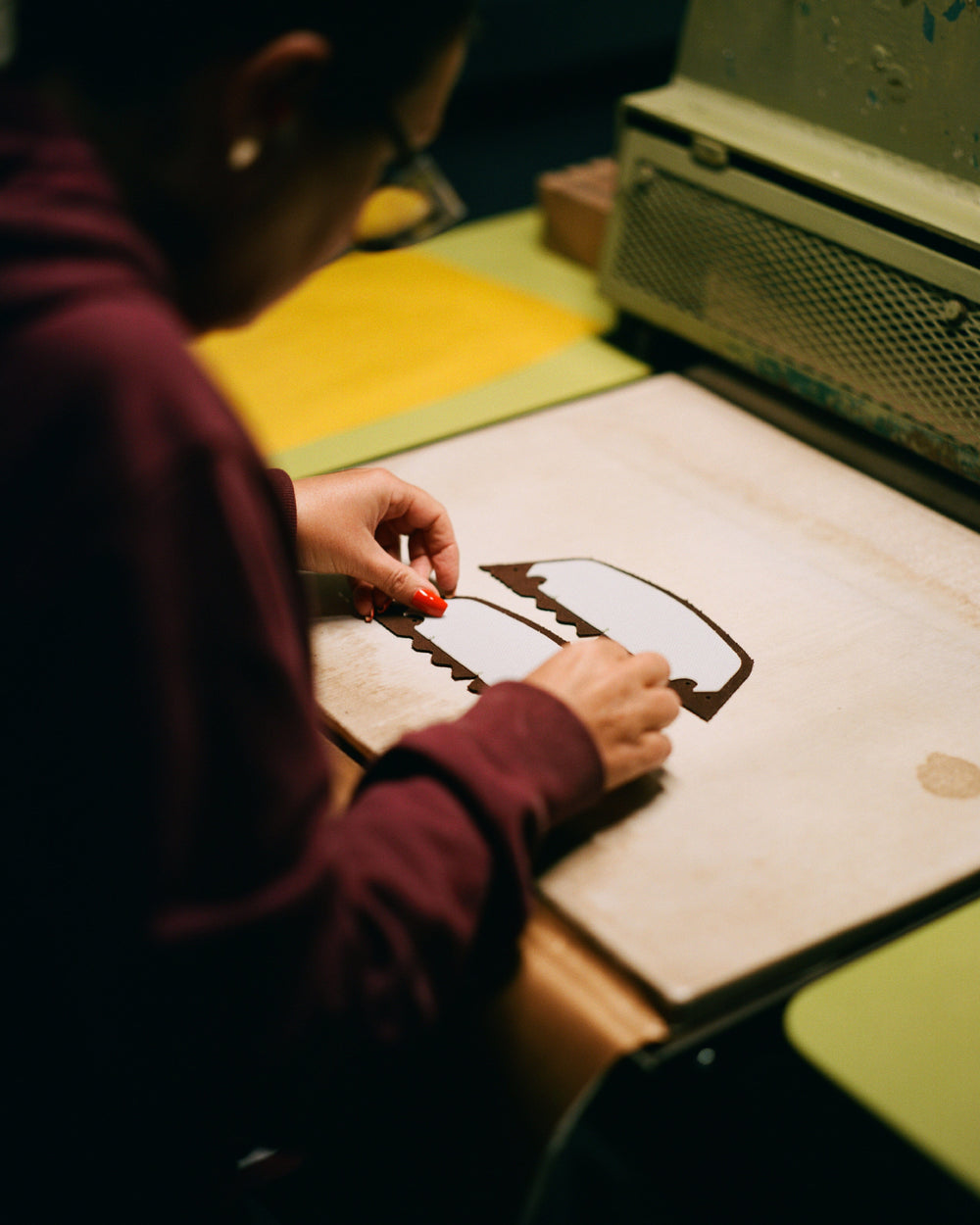
The 991s and 1500s that end up on shelves in Tokyo and New York begin their lives here, shaped by those who know each model’s quirks like old friends. What’s striking is not just the quality of the product, but the quiet pride that runs through the place. One woman, stitching panels with a machine, tells us: “I’ve probably made 10,000 pairs, maybe more. They say you get bored. I never have.”
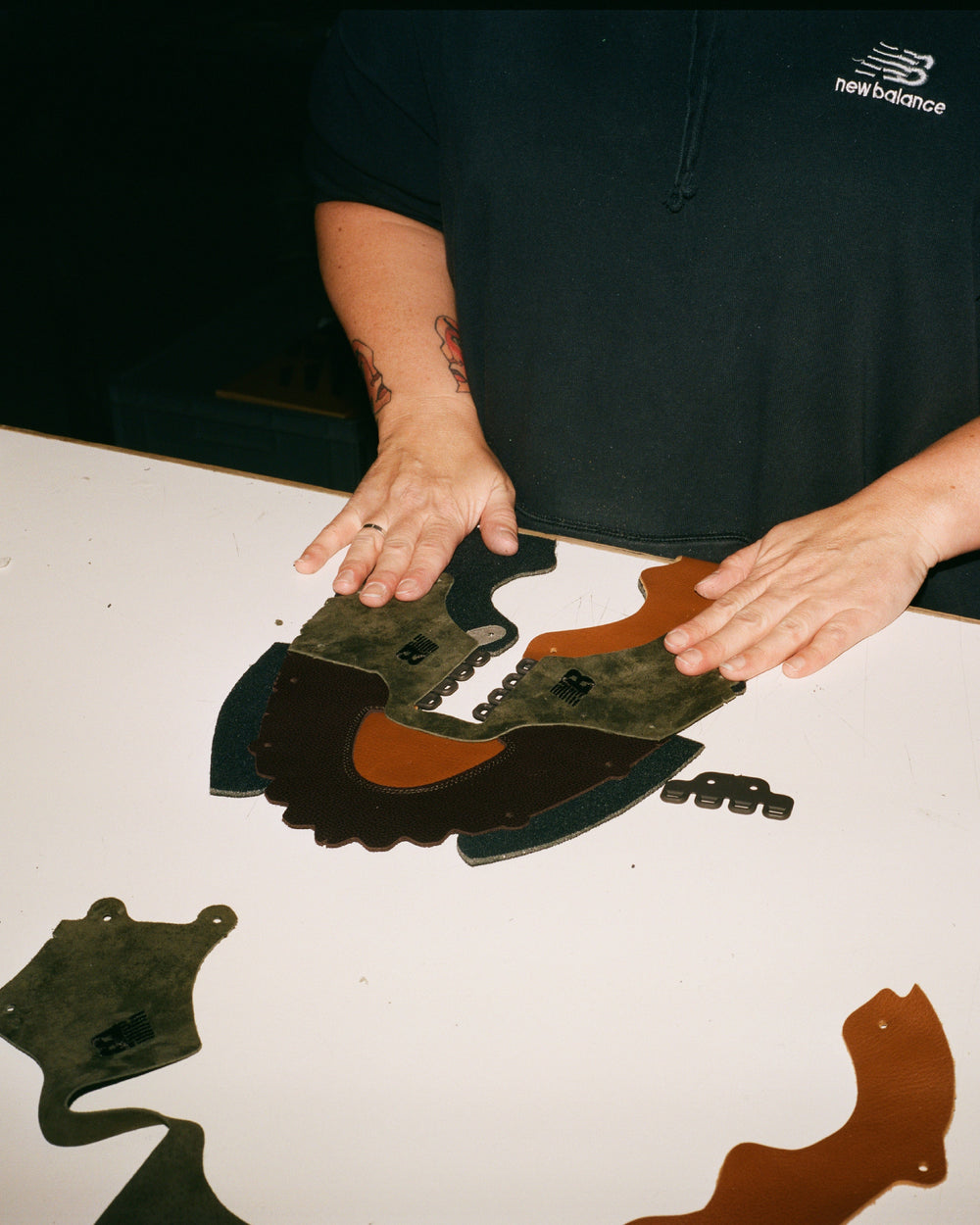
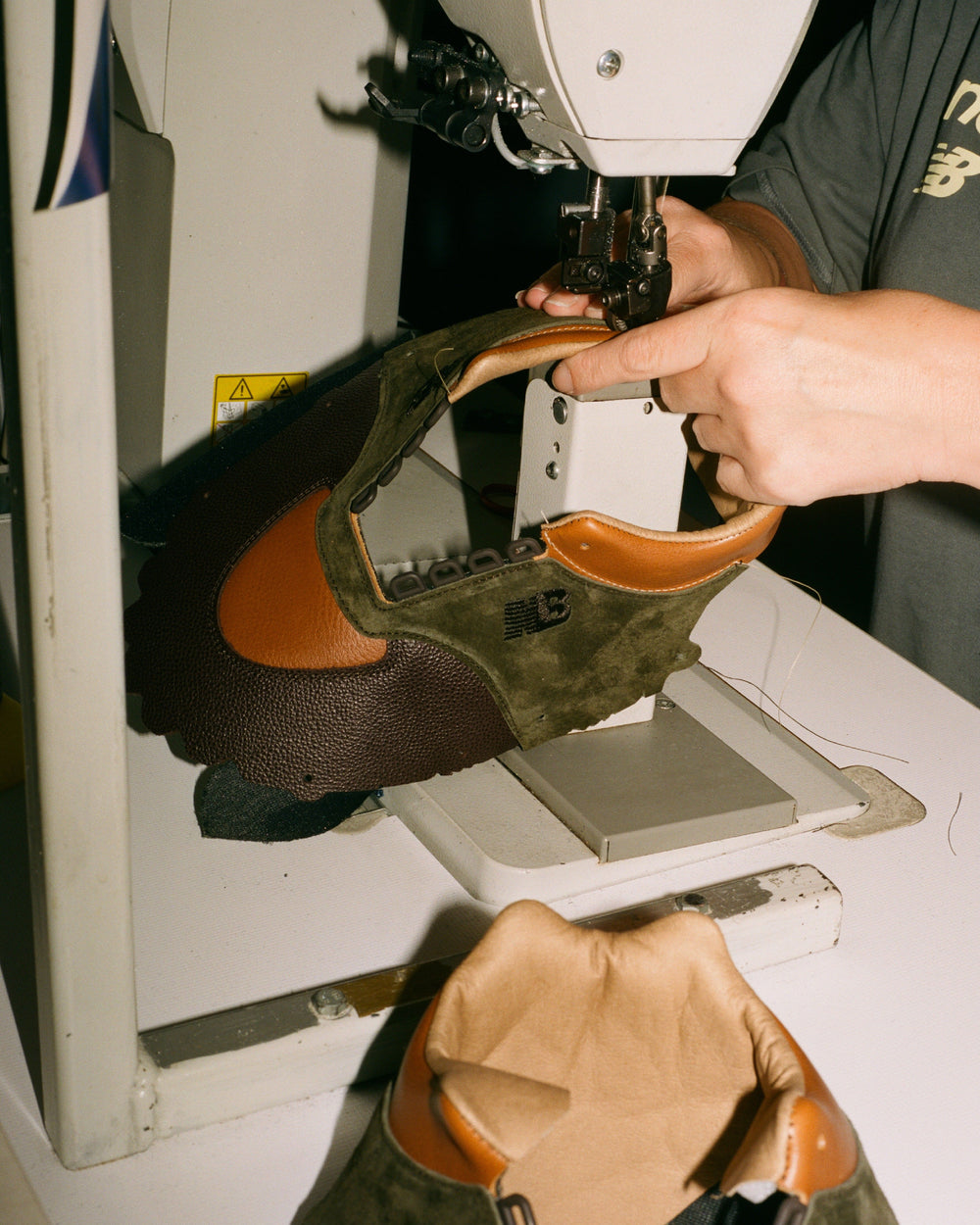
For us, a brand that also trades in craft and quiet longevity, there’s a shared language here. One of material, intention, and integrity. We aren’t here for spectacle, we’re here to listen, to learn, and to tip our hats to those who understand that making things well still matters.
We’re here with Allan, Head of Technical and Quality and our warm, no-nonsense guide through the factory floor. Allan has been part of the story for 29 years, and he walks us through the labyrinthine process like a man who knows every bolt in the building. “Don’t work harder, work smarter,” he tells us, with the kind of conviction that can only be earned from nearly three decades of doing just that.
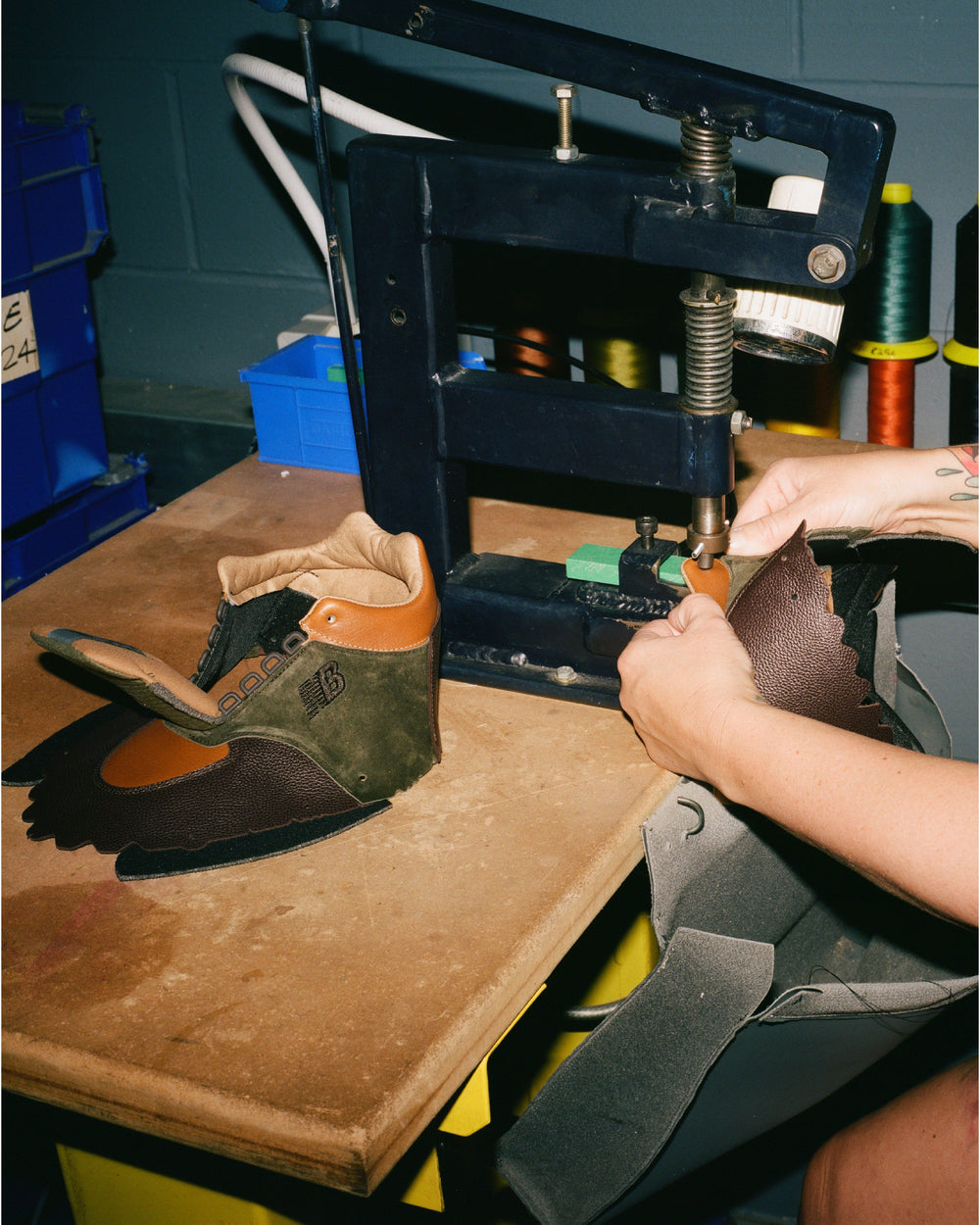
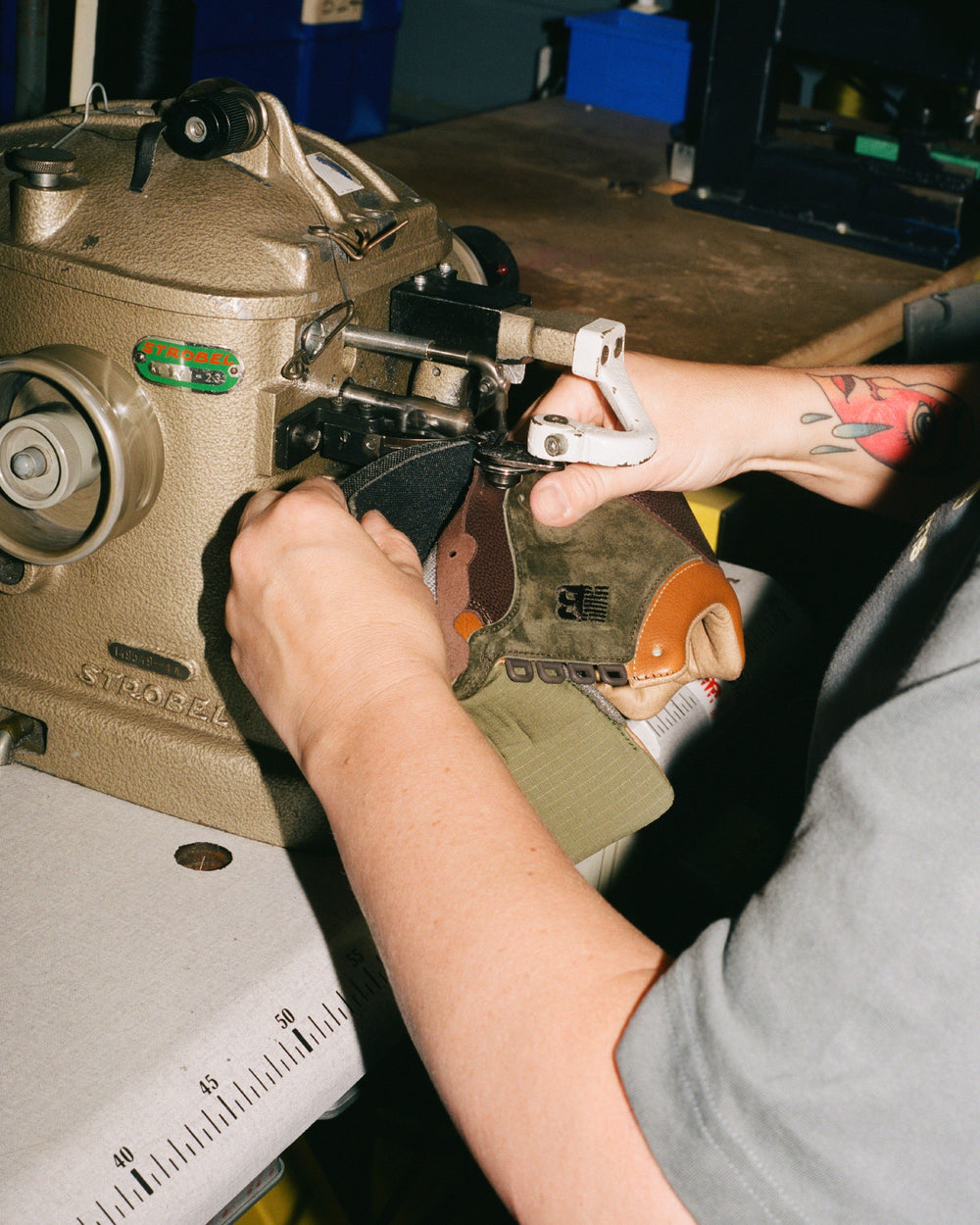
Flimby is not just surviving in the world of modern manufacturing, it’s adapting. Solar panels already gleam on the roof, and they’re currently in the process of erecting a wind turbine to harness that famously bracing Cumbrian breeze. But for all the forward thinking, the soul of this place remains resolutely traditional.
We begin at the "Go-By”, a sample shoe made with meticulous care and reverence, used by everyone across the production process. Allan gestures to it with pride: “That’s the most important shoe in here. It’s our bible each time.”
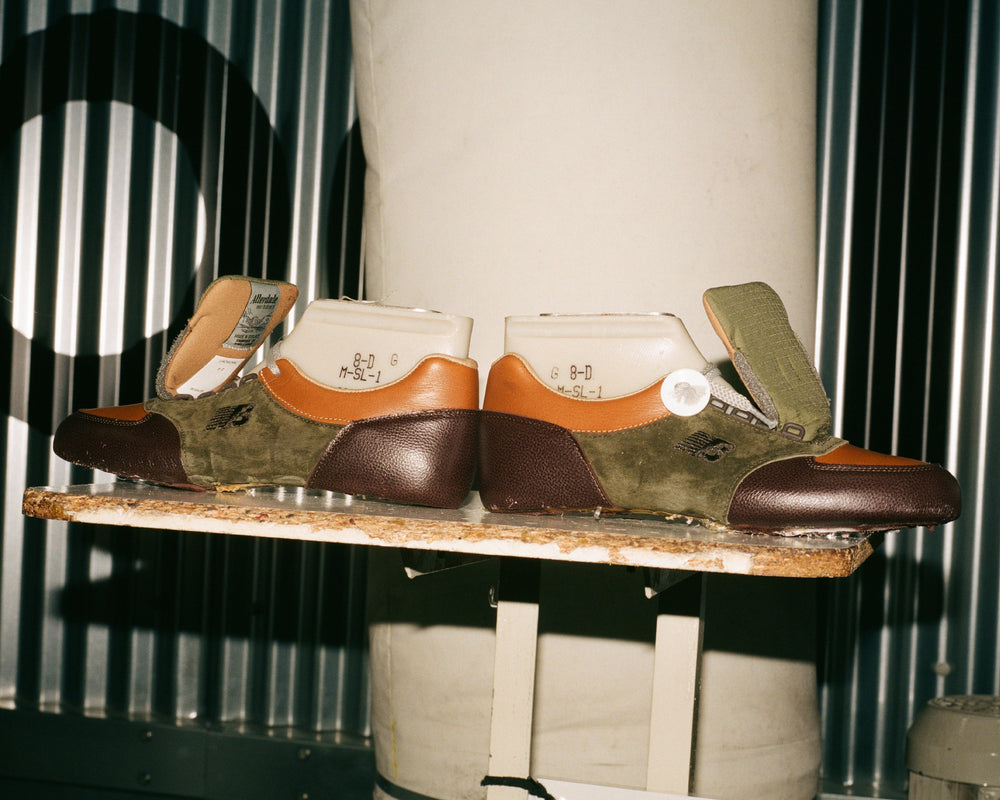
In the materials section, hides of leather and suede, still fragrant and warm from transport, arrive tucked on little shuttle trolleys alongside bolts of technical fabric. They’re hoisted onto metal horses and scrutinised for natural imperfections. “Leather’s more difficult than suede,” Allan explains. “You’ve got to work around the flaws, save as much as you can. We cut as close as possible, automatic cutters leave a gap. We don’t.”
Three men do the honours, slicing and pressing with hand tools and pistons that wouldn’t look out of place in a Victorian forge. There’s an old-fashioned romance to it all. “You can’t see it properly on a display monitor”.
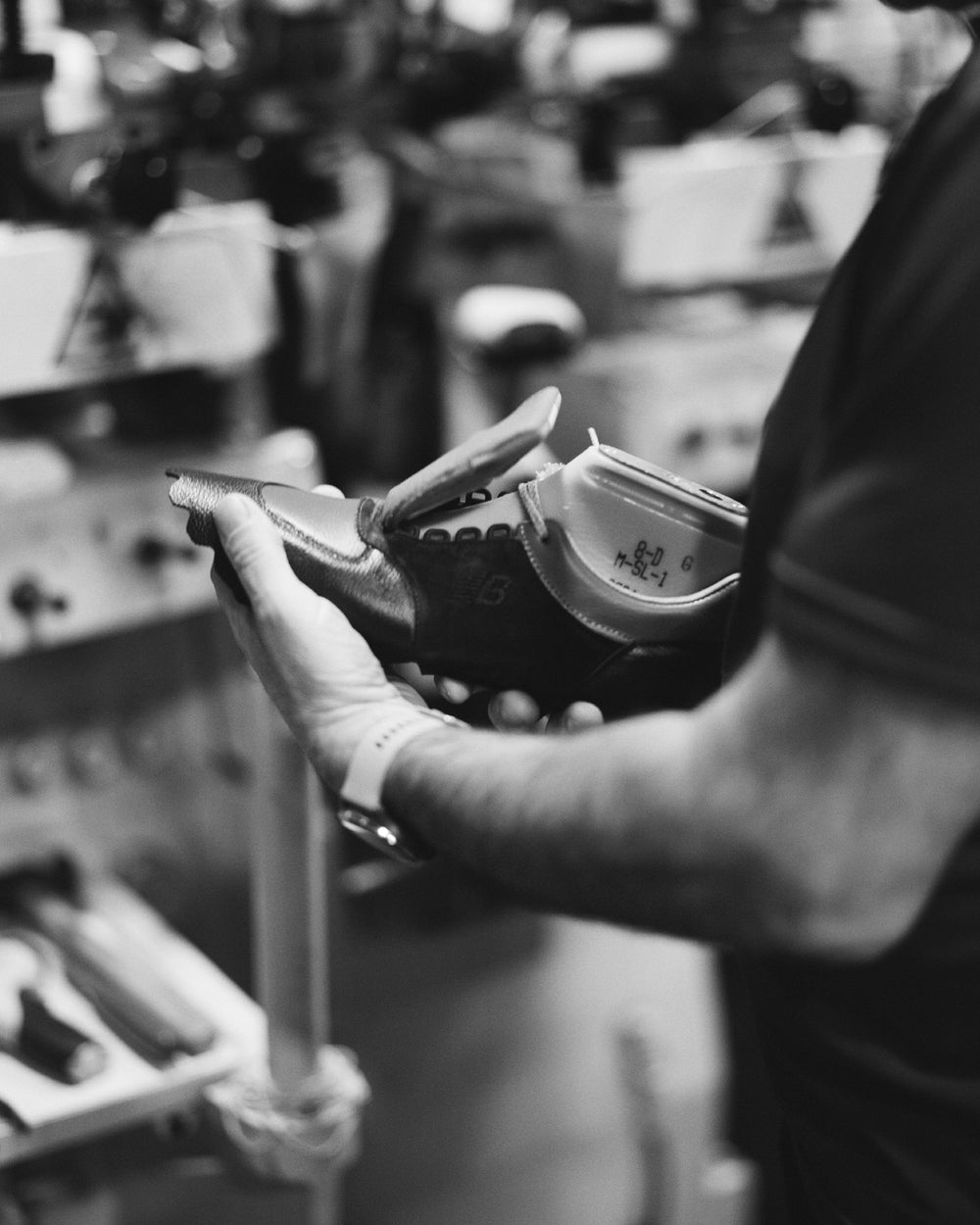
Waste is the enemy, and the team mark any defects with a kind of futuristic wand that Allan just calls “the magic pen.” Even the skiving of underlays is approached with surgical precision, ensuring not an inch more material than needed is removed.
“These ladies are worth their weight in gold,” he says as we move to the stitching room. “You should see how fast these lasses can stitch.” It’s hard not to be mesmerised by the precision. Foxing; the final wraparound strip at the base of the upper, is hand-sprung, a crucial and unforgiving task. “It makes or breaks the shoe,” Allan notes.
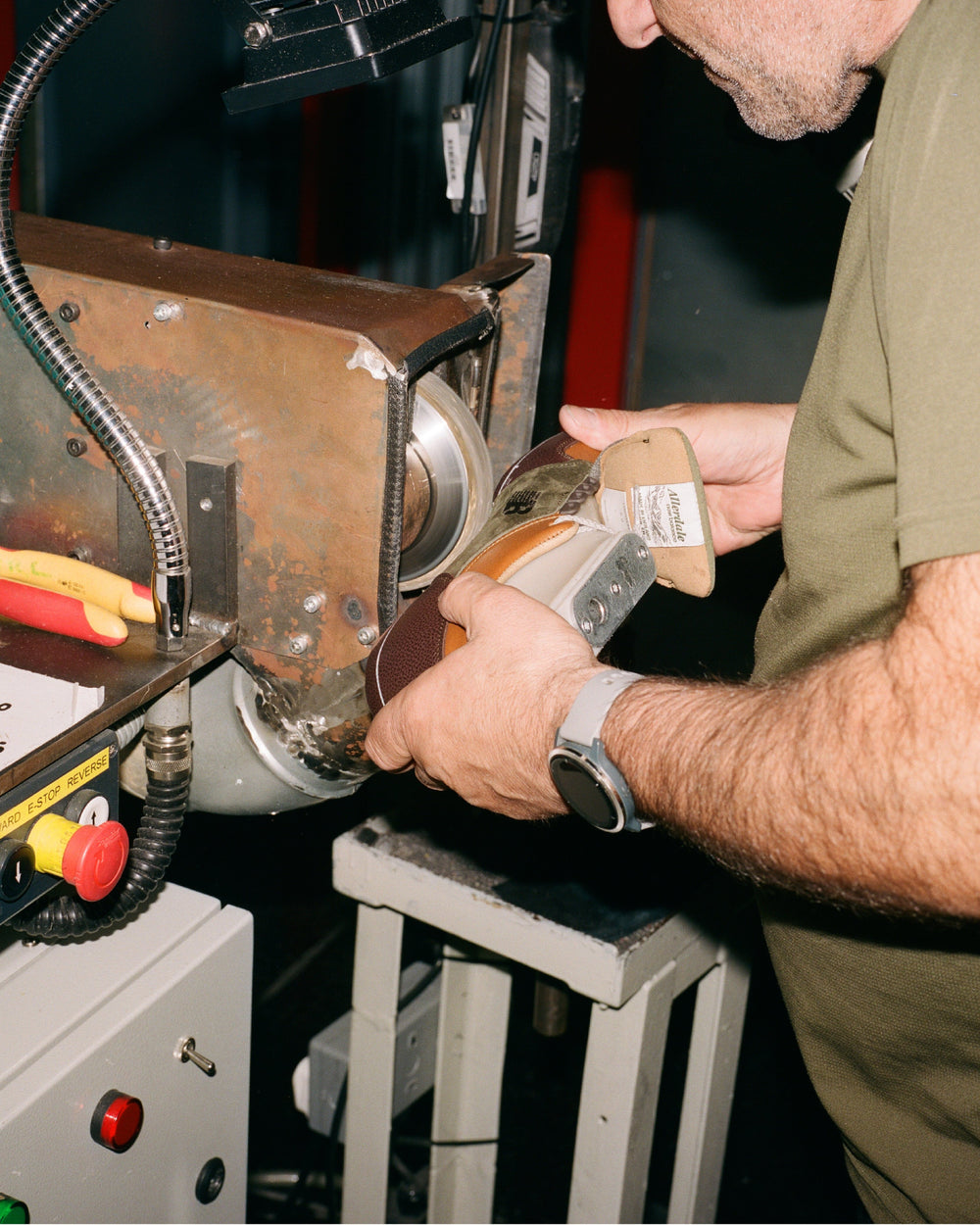
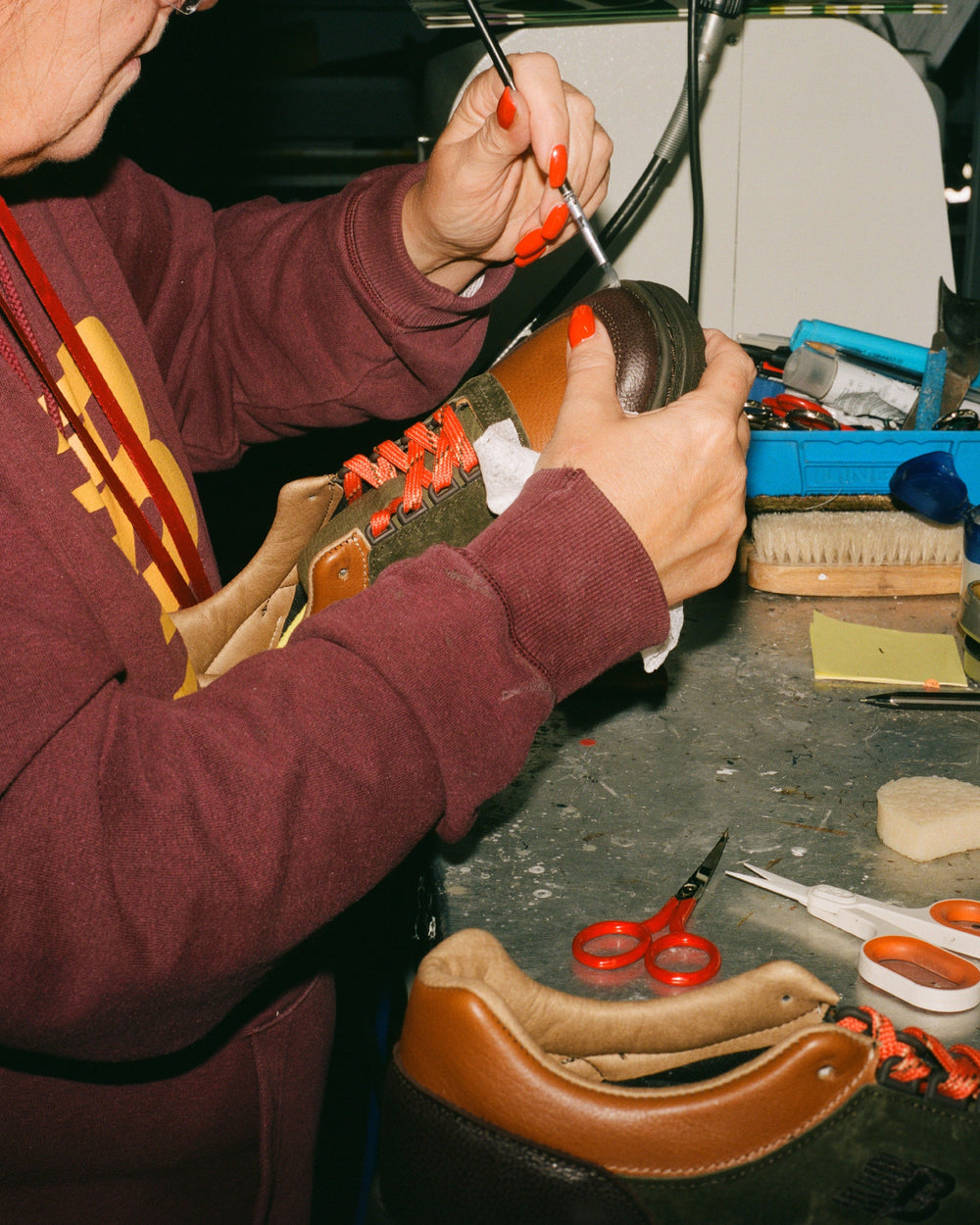
It’s not all hand tools and calloused fingers, though. 98% of the roughing is done by robotic arms, hulking and precise. But the finishing touch is still done by hand, some things just can’t be replicated.
Once the upper is prepped and reinforced, it’s slipped onto lasts imported from Italy. A heated machine, not dissimilar to a takoyaki pan, rotates and turns the shoes gently, heating just enough to reactivate the solvent and make thing a little more yielding. “Like anything else,” Allan says with a wry smile, “put some heat in it and it’ll get nice and supple.”
In total, the team here produces 440 pairs every working day. Each one, including ours, is inspected, polished, and finally laced by hand before being boxed and ready for the world.
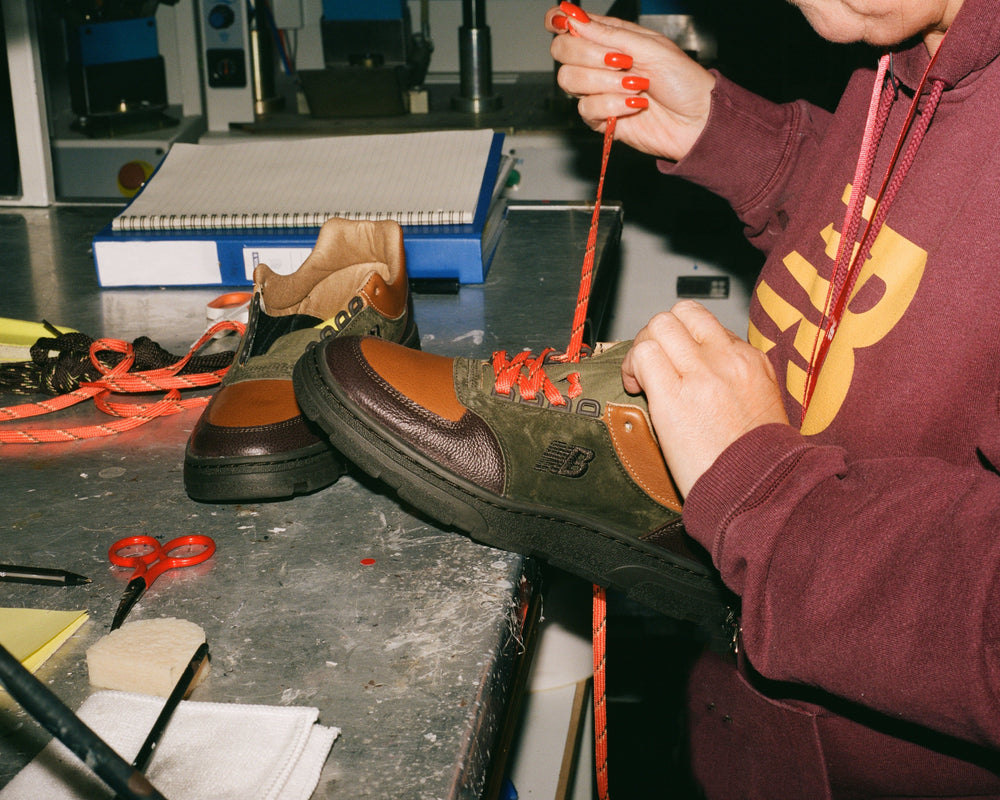
In an age of automation and algorithms, this factory reminds us that craftsmanship still matters. It turns out, when you do things right, people notice, even when you’re tucked away on the blustery north-west coast.
As we left, a light haze softened the edges of the factory. Beyond the car park, the sea stretched out, grand, grey and endless. It felt like the right backdrop. Not showy, not loud, but honest. Like the shoes. Like the people.
Like Flimby.
